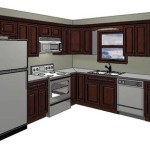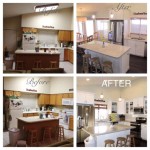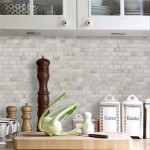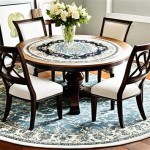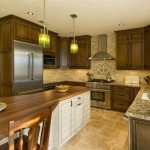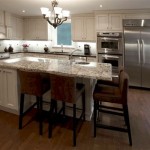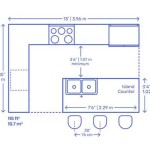Best Light Fixtures For Kitchen
The kitchen, often considered the heart of the home, necessitates well-planned and effective lighting. It serves multiple functions, acting as a space for food preparation, dining, socializing, and sometimes even a home office. Therefore, the lighting within a kitchen must cater to these diverse activities. The selection of appropriate light fixtures directly impacts the functionality, ambiance, and overall aesthetic appeal of the kitchen environment. This article delves into the various types of light fixtures suitable for kitchens, analyzing their strengths and weaknesses, and providing guidance for selecting the most optimal choices for different kitchen layouts and design preferences.
A comprehensive kitchen lighting plan typically incorporates three primary types of lighting: general or ambient lighting, task lighting, and accent lighting. General lighting provides overall illumination for the entire space, ensuring safe navigation and comfortable visibility. Task lighting focuses on specific work areas, such as countertops and cooktops, enhancing precision and safety during food preparation. Accent lighting highlights architectural features, decorative elements, or artwork, adding visual interest and enhancing the overall ambiance of the kitchen.
Understanding the Different Types of Kitchen Light Fixtures
The market offers a wide array of light fixtures suitable for kitchen applications. Understanding the characteristics and applications of each type is crucial for creating a well-balanced and functional lighting scheme. Common options include recessed lights, pendant lights, under-cabinet lights, track lights, chandeliers, and flush mount/semi-flush mount fixtures.
Recessed Lights: Recessed lights, also known as can lights, are installed flush with the ceiling, providing a clean and unobtrusive source of general lighting. They are particularly effective in kitchens with low ceilings as they do not hang down and obstruct the line of sight. Recessed lights can also be used as task lighting when strategically positioned above work surfaces. The installation requires cutting holes in the ceiling, which can be more involved than other lighting options. The spacing and wattage of recessed lights are critical for achieving uniform illumination, avoiding shadows and dark spots. LED recessed lights are favored for their energy efficiency and long lifespan.
Pendant Lights: Pendant lights are suspended from the ceiling by a cord, chain, or rod. They offer a versatile lighting solution that can be used for general, task, or accent lighting, depending on their size, design, and placement. Pendant lights are particularly effective above kitchen islands or breakfast bars, providing focused illumination for food preparation and dining. They are available in a wide range of styles, from minimalist designs to ornate chandeliers, allowing homeowners to customize the look of their kitchen. Consider the height of the ceiling and the size of the island when selecting pendant lights to ensure adequate clearance and proper scale.
Under-Cabinet Lights: Under-cabinet lights are mounted beneath kitchen cabinets to provide direct task lighting on countertops. They are essential for improving visibility during food preparation, especially in areas where overhead lighting is insufficient. Under-cabinet lights are available in various forms, including LED strips, puck lights, and linear fixtures. LED strip lights offer a seamless and energy-efficient solution, while puck lights provide focused illumination. Proper installation ensures even light distribution and avoids harsh shadows. Under-cabinet lighting can also enhance the aesthetic appeal of the kitchen by highlighting the backsplash and countertop materials.
Track Lights: Track lighting systems consist of a linear track with multiple light fixtures that can be adjusted and repositioned to direct light where it is needed most. Track lights offer a flexible lighting solution for kitchens with irregular layouts or areas where task lighting needs to be adaptable. They are commonly used to highlight specific features, such as artwork or architectural details. Track lights are available in a variety of styles and finishes, allowing homeowners to coordinate them with the overall kitchen design. Proper installation involves securely mounting the track to the ceiling and wiring it to a junction box.
Chandeliers: While often associated with dining rooms, chandeliers can also be used in kitchens to add a touch of elegance and sophistication. They are particularly suitable for kitchens with high ceilings and a formal design aesthetic. Chandeliers can serve as a focal point above a kitchen island or dining area, creating a dramatic and visually appealing effect. When selecting a chandelier for the kitchen, consider the size and style of the space to ensure that it complements the overall décor. It is also important to choose a chandelier that provides adequate light for the intended purpose.
Flush Mount and Semi-Flush Mount Fixtures: Flush mount and semi-flush mount fixtures are mounted directly to the ceiling, making them suitable for kitchens with low ceilings. Flush mount fixtures sit flush against the ceiling, while semi-flush mount fixtures have a short stem that extends slightly downward. These fixtures provide general lighting and are often used in smaller kitchens or areas where a low profile is desired. They are available in a variety of styles, from simple and functional to more decorative designs. The wattage of the bulb should be chosen based on the size of the room and the desired level of illumination.
Factors to Consider When Choosing Kitchen Light Fixtures
Selecting the best light fixtures for a kitchen involves careful consideration of several factors, including the size and layout of the space, the intended use of each area, the overall design aesthetic, and energy efficiency requirements. A well-planned lighting scheme will enhance the functionality, safety, and visual appeal of the kitchen.
Kitchen Size and Layout: The size and layout of the kitchen significantly influence the type and number of light fixtures required. Larger kitchens typically require more lighting than smaller kitchens to achieve adequate illumination. Open-concept kitchens may require a combination of general, task, and accent lighting to define different zones and create visual interest. The layout of the kitchen, including the placement of cabinets, appliances, and islands, will also impact the placement of light fixtures. Consider the natural light available in the kitchen and how it interacts with the artificial lighting.
Intended Use of Each Area: Different areas of the kitchen have different lighting requirements based on their intended use. The countertop areas used for food preparation require bright, focused task lighting to ensure safety and precision. The dining area may benefit from softer, more ambient lighting to create a relaxed and inviting atmosphere. The sink area should be well-lit to facilitate cleaning and washing dishes. Identifying the specific lighting needs of each area is essential for creating a functional and comfortable kitchen environment.
Design Aesthetic: The light fixtures should complement the overall design aesthetic of the kitchen. Modern kitchens may benefit from sleek and minimalist fixtures, while traditional kitchens may benefit from more ornate and decorative fixtures. Consider the color scheme, materials, and architectural details of the kitchen when selecting light fixtures. The finish of the fixtures should coordinate with other hardware in the kitchen, such as cabinet pulls and faucets. A cohesive design aesthetic will create a visually appealing and harmonious space.
Energy Efficiency: Energy efficiency is an important consideration when choosing kitchen light fixtures. LED lighting is significantly more energy-efficient than traditional incandescent lighting, using up to 75% less energy and lasting much longer. LED bulbs also produce less heat, which can help reduce cooling costs in the summer. Consider the wattage and lumen output of the bulbs when selecting light fixtures. Higher lumen output indicates brighter light. Look for Energy Star-rated fixtures to ensure optimal energy efficiency and performance. Dimmers can also be used to further reduce energy consumption and create different lighting moods.
Installation and Maintenance of Kitchen Light Fixtures
Proper installation and maintenance are crucial for ensuring the safety, longevity, and optimal performance of kitchen light fixtures. Improper installation can lead to electrical hazards, while neglected maintenance can reduce the lifespan of the fixtures and diminish their effectiveness.
Installation: It is recommended to hire a qualified electrician to install kitchen light fixtures, especially if the installation involves wiring or modifications to the electrical system. A professional electrician will ensure that the wiring is done safely and correctly, complying with all applicable building codes. Before starting the installation, turn off the power to the circuit breaker that controls the lighting in the kitchen. Carefully follow the manufacturer's instructions for installing each fixture. Ensure that the fixtures are securely mounted to the ceiling or cabinets. Test the fixtures after installation to ensure that they are working properly.
Maintenance: Regular cleaning is essential for maintaining the appearance and performance of kitchen light fixtures. Dust and grease can accumulate on the fixtures, reducing their brightness and efficiency. Use a soft cloth or duster to remove dust from the fixtures. For greasy or stubborn stains, use a mild soap and water solution. Avoid using abrasive cleaners or harsh chemicals, as they can damage the finish of the fixtures. Regularly inspect the fixtures for any signs of damage or wear. Replace any damaged or worn parts promptly. Check the wiring connections periodically to ensure that they are secure. Replace bulbs as needed to maintain optimal brightness.
Safety Precautions: Always turn off the power to the circuit breaker before working on any electrical fixtures. Use caution when working with electricity. If you are not comfortable working with electricity, hire a qualified electrician to perform the work. Never overload electrical circuits. Use the correct wattage bulbs for the fixtures. Keep flammable materials away from light fixtures. Ensure that all light fixtures are properly grounded. Follow all applicable building codes and safety regulations.
By considering these factors and following proper installation and maintenance procedures, homeowners can create a well-lit and functional kitchen that enhances the overall enjoyment and value of their home. The key to successful kitchen lighting is a thoughtful plan that integrates general, task, and accent lighting to meet the specific needs of the space and the preferences of the occupants.

Best Kitchen Lighting For Your Cooking Space Stefana Silber

Best Types Of Light Fixtures For Your Kitchen

What Is A Good Light Fixture For Kitchen
:max_bytes(150000):strip_icc()/27378_Kay_ChattanoogaLookOutMtn__0149-2193c71c1b0c4f74953206d5b07c868f-06978445e8004921b3b8d53946cbeefb.jpg?strip=all)
56 Kitchen Lighting Ideas That Ll Transform Your Space

6 Kitchen Lighting Ideas Lowe S

Choosing Kitchen Light Fixtures Lighting Design Tips Hgtv

Best Kitchen Lighting For Your Cooking Space Stefana Silber

45 Best Kitchen Lighting Ideas And Ceiling Light Fixtures

Best Kitchen Lighting For Your Cooking Space Stefana Silber

Design Ideas For The Ultimate Entertaining Kitchen

